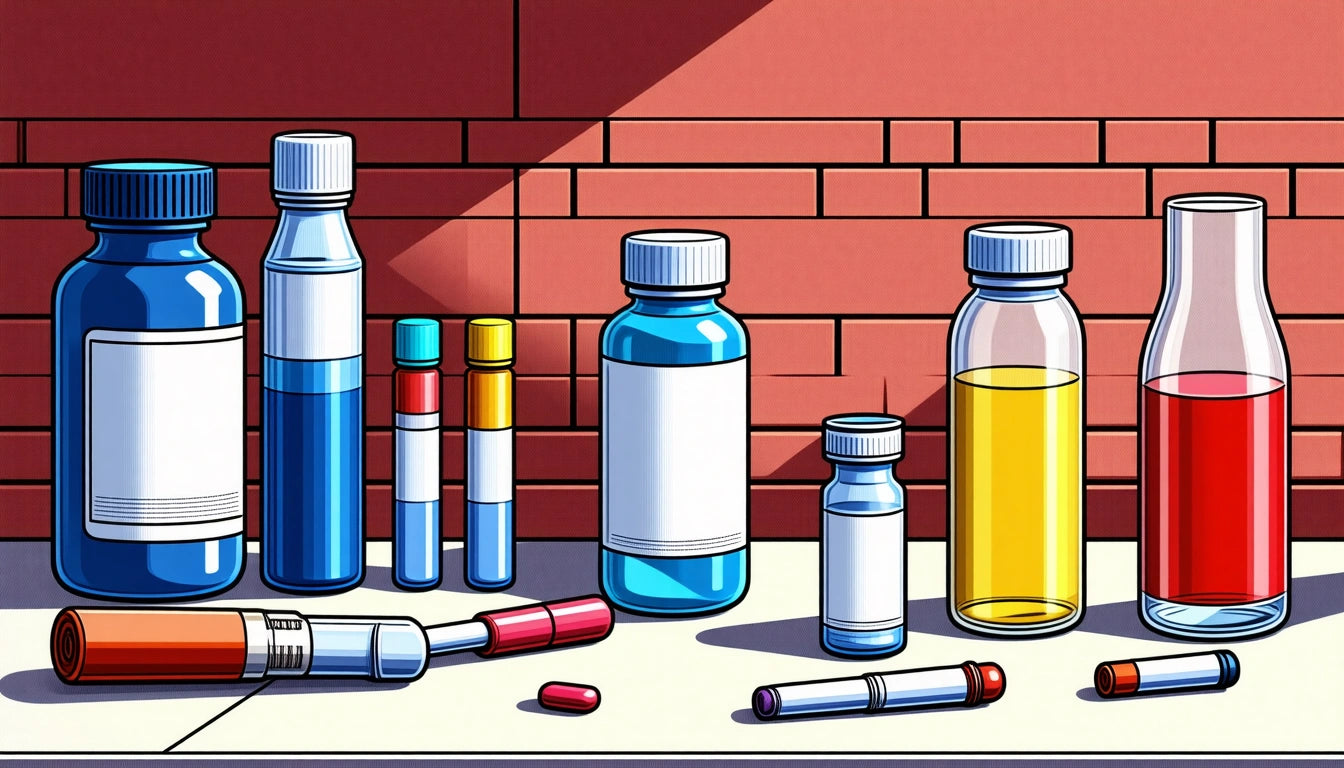Table of Contents
Understanding What a Urine Drug Screen Tests For
Urine drug screens are among the most common methods used to detect the presence of illicit substances and prescription medications in an individual's system. These tests are widely employed in healthcare settings, workplace drug testing programs, substance abuse treatment, and legal contexts. Understanding what is tested for in a urine drug screen can help individuals better prepare for these assessments and comprehend their results.
Urine Drug Screen Basics: What They Are and How They Work
A urine drug screen (UDS) is designed to detect specific substances or their metabolites in a urine sample. Unlike comprehensive laboratory tests, drug screens typically look for categories of drugs rather than specific compounds. These tests work by using antibodies that react with drug metabolites present in urine.
Most standard urine drug screens utilize immunoassay technology, which provides rapid results but may sometimes yield false positives. For this reason, positive results from initial screens are often confirmed using more specific methods like gas chromatography-mass spectrometry (GC-MS) or liquid chromatography-mass spectrometry (LC-MS).
Substances Detected in Urine Drug Screens
What does a urine drug screen detect? Standard panels typically test for the following substances:
1. Cannabinoids (Marijuana/THC)
Tests detect THC-COOH, the main metabolite of THC. According to research on detection windows, THC can be detected for 3-30 days depending on usage patterns.
2. Opioids
Screens typically detect morphine, codeine, heroin metabolites, and sometimes synthetic opioids like oxycodone and hydrocodone.
3. Amphetamines
These tests identify amphetamine, methamphetamine, and sometimes MDMA (ecstasy).
4. Cocaine
Tests detect benzoylecgonine, cocaine's primary metabolite.
5. Benzodiazepines
Various benzodiazepine metabolites can be detected, though some tests may miss certain compounds in this class.
Additional Substances in Expanded Panels
- Barbiturates
- Methadone
- Phencyclidine (PCP)
- Propoxyphene
- MDMA (Ecstasy)
- Buprenorphine
- Synthetic cannabinoids (K2/Spice)
- Fentanyl
Detection Windows for Common Substances
What is tested in a urine drug screen remains detectable for varying periods depending on several factors, including metabolism, frequency of use, and hydration levels. Here are approximate detection windows:
- Marijuana: Single use (3-4 days); Regular use (up to 30+ days)
- Cocaine: 2-4 days
- Amphetamines/Methamphetamines: 2-4 days
- Opioids: 2-4 days (longer for extended-release formulations)
- Benzodiazepines: Short-acting (3 days); Long-acting (up to 30 days)
- Alcohol metabolites: 12-24 hours (standard test); up to 80 hours (EtG test)
These timeframes can vary significantly based on individual factors. For a more detailed analysis of detection windows, comparing blood and urine drug tests provides valuable insights into how different testing methods affect detection periods.
Testing Methods and Accuracy Considerations
When considering what is tested for in a urine drug screen, it's important to understand the methods used and their limitations:
Immunoassay Tests
These are the most common initial screening methods, providing quick results but with potential for false positives. Certain medications, foods, or supplements can trigger false positives on immunoassay tests.
Confirmatory Testing
More sophisticated methods like GC-MS or LC-MS are used to confirm positive results from initial screens. These methods are highly specific and can identify exact compounds present in the sample.
The accuracy and reliability of urine drug tests depend significantly on the testing methodology, sample handling procedures, and quality control measures in place.
Safety in testing procedures is paramount, particularly when handling potentially hazardous substances. Similar to how protective packaging standards protect children from harmful substances, proper laboratory protocols ensure safe handling of biological samples during drug testing.
Differences Between Urine Drug Screens and Standard Urinalysis
Many people wonder, "Does a urinalysis show drugs?" While both tests analyze urine, they serve different purposes:
Standard Urinalysis
A standard urinalysis typically examines:
- Physical characteristics (color, clarity)
- Chemical properties (pH, protein, glucose)
- Microscopic elements (red blood cells, white blood cells, bacteria)
A basic urinalysis does not specifically test for drugs unless drug screening is explicitly ordered. However, some substances might affect certain parameters measured in a standard urinalysis.
Urine Drug Screen
In contrast, a urine drug screen specifically tests for the presence of drugs or their metabolites. Drug screens differ from comprehensive drug tests in that screens identify classes of substances rather than specific compounds.
Future Developments in Drug Screening Technology
The field of drug testing continues to evolve with new technologies and approaches. Future developments may include:
- More sensitive detection methods for synthetic drugs
- Rapid on-site testing with improved accuracy
- Expanded panels to detect emerging substances of abuse
- Integration with digital health platforms for monitoring
- Non-invasive alternative testing methods
Understanding what a urine drug screen tests for is essential for healthcare providers, employers, and individuals subject to testing. While these screens provide valuable information, they should be interpreted within the appropriate clinical or regulatory context, recognizing both their capabilities and limitations.
For those concerned about upcoming tests, understanding test procedures and preparation strategies can help ensure the most accurate results possible. Remember that the most reliable approach is always transparency with healthcare providers about any substances used that might affect test results.











Leave a comment
All comments are moderated before being published.
This site is protected by hCaptcha and the hCaptcha Privacy Policy and Terms of Service apply.